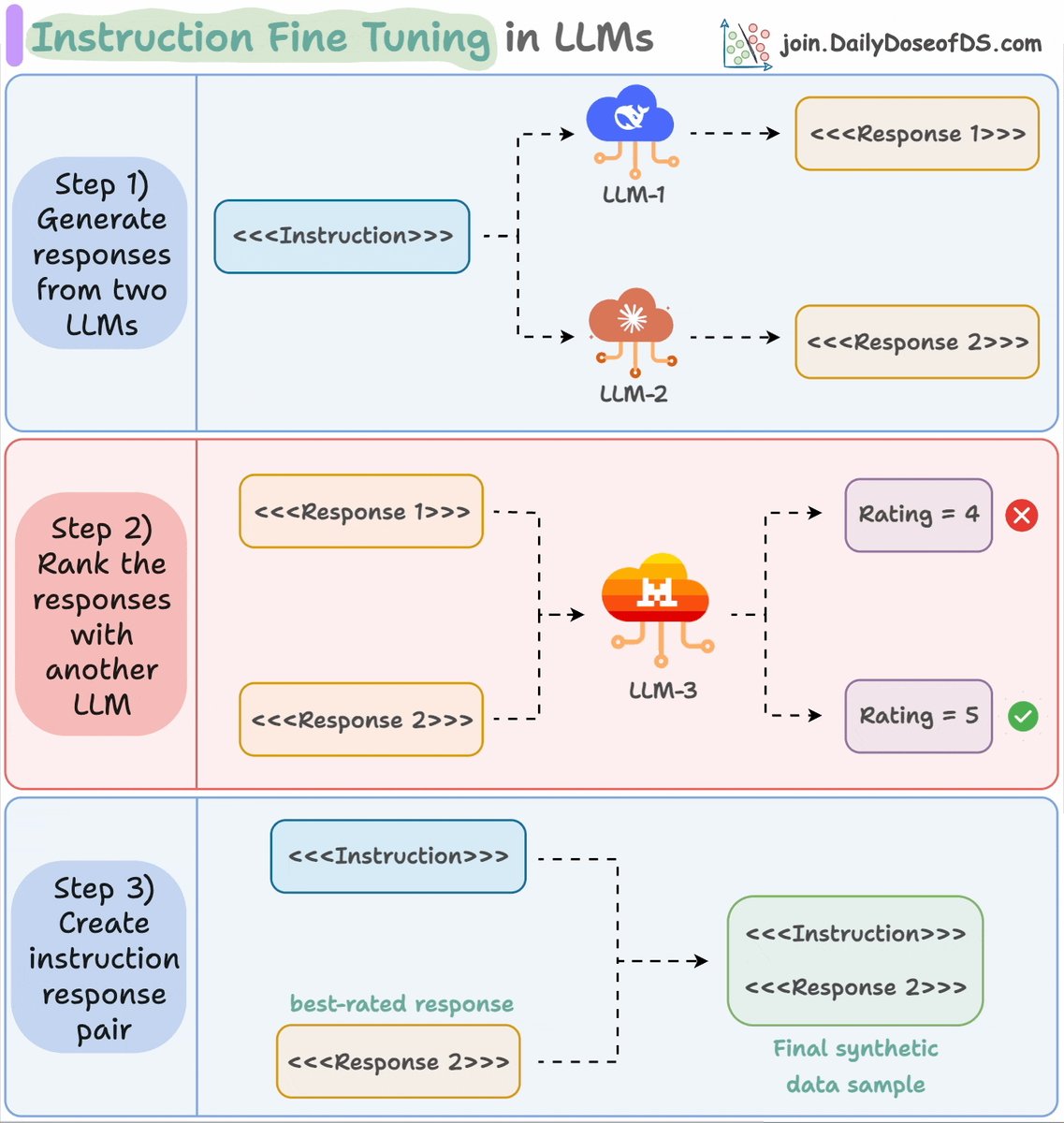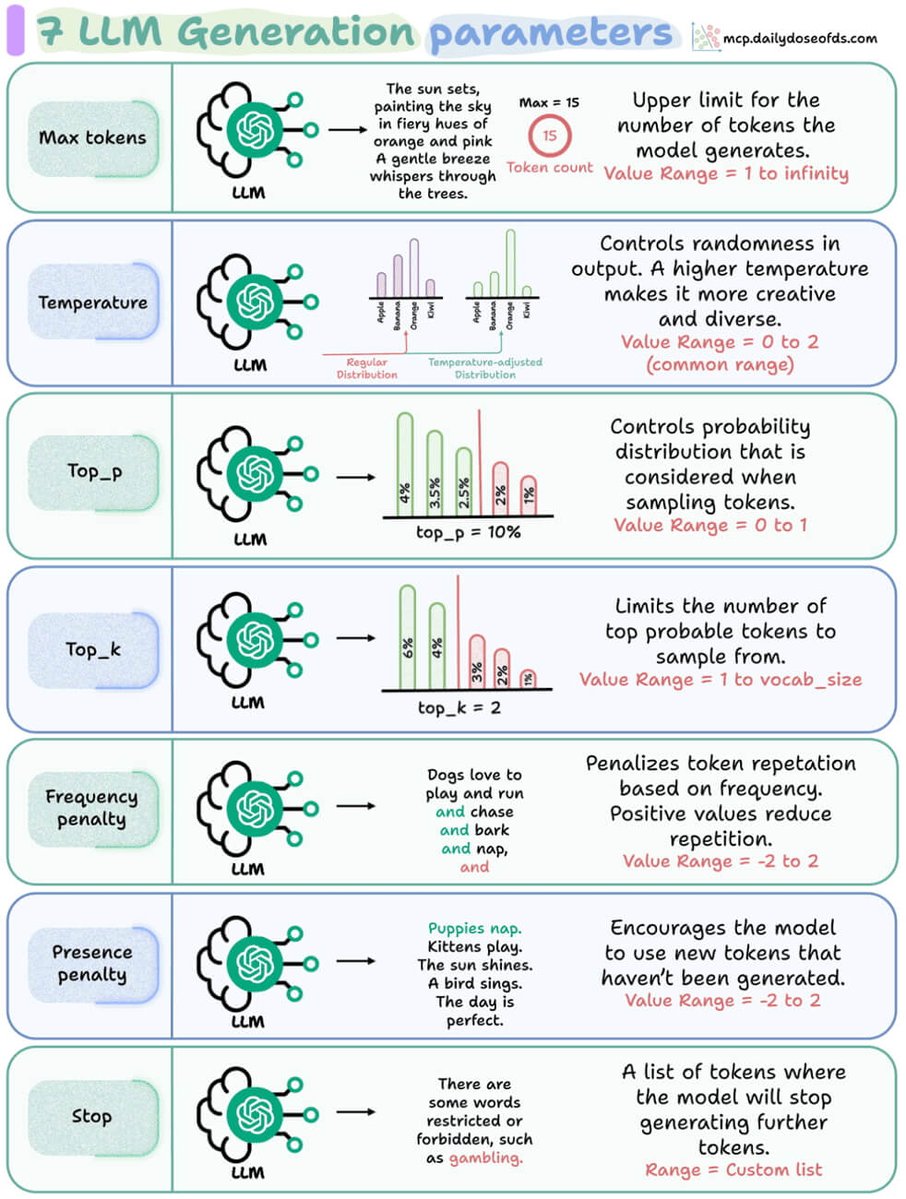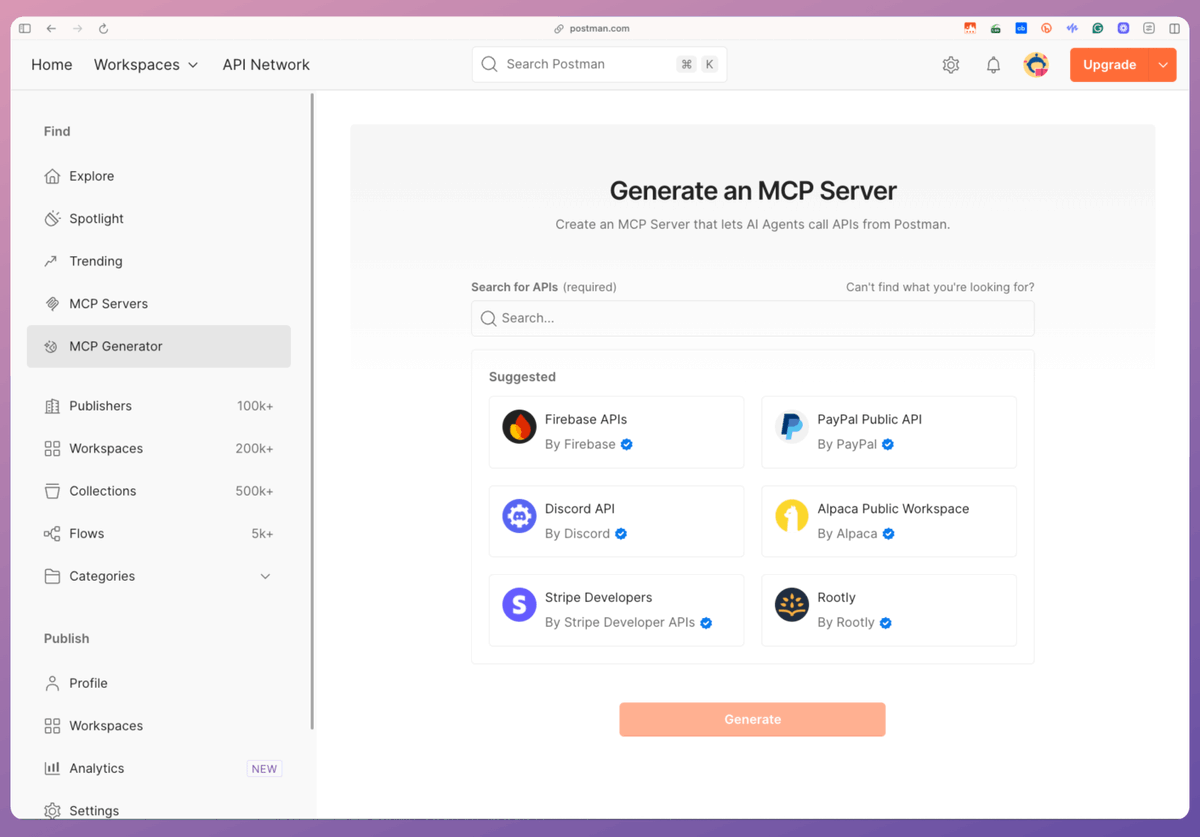Let's generate our own LLM fine-tuning dataset (100% local):
Before we begin, here's what we're doing today!
We'll cover:
- What is instruction fine-tuning?
- Why is it important for LLMs?
Finally, we'll create our own instruction fine-tuning dataset.
Let's dive in!
We'll cover:
- What is instruction fine-tuning?
- Why is it important for LLMs?
Finally, we'll create our own instruction fine-tuning dataset.
Let's dive in!

Once an LLM has been pre-trained, it simply continues the sentence as if it is one long text in a book or an article.
For instance, check this to understand how a pre-trained LLM behaves when prompted 👇
For instance, check this to understand how a pre-trained LLM behaves when prompted 👇

Generating a synthetic dataset using existing LLMs and utilizing it for fine-tuning can improve this.
The synthetic data will have fabricated examples of human-AI interactions.
Check this sample👇
The synthetic data will have fabricated examples of human-AI interactions.
Check this sample👇

This process is called instruction fine-tuning.
Distilabel is an open-source framework that facilitates generating domain-specific synthetic text data using LLMs.
Check this to understand the underlying process👇
Distilabel is an open-source framework that facilitates generating domain-specific synthetic text data using LLMs.
Check this to understand the underlying process👇
Next, we define our pipeline:
- Load dataset.
- Generate two responses.
- Combine the responses into one column.
- Evaluate the responses with an LLM.
- Define and run the pipeline.
Check this👇
- Load dataset.
- Generate two responses.
- Combine the responses into one column.
- Evaluate the responses with an LLM.
- Define and run the pipeline.
Check this👇

Once the pipeline has been defined, we need to execute it by giving it a seed dataset.
The seed dataset helps it generate new but similar samples.
Check this code👇
The seed dataset helps it generate new but similar samples.
Check this code👇

Done!
This produces the instruction and response synthetic dataset as desired.
Check the sample below👇
This produces the instruction and response synthetic dataset as desired.
Check the sample below👇

Here's the instruction fine-tuning process again for your reference.
- Generate responses from two LLMs.
- Rank the response using another LLM.
- Pick the best-rated response and pair it with the instruction.
Check this👇
- Generate responses from two LLMs.
- Rank the response using another LLM.
- Pick the best-rated response and pair it with the instruction.
Check this👇

For further reading, I covered the 4 stages of training LLMs from scratch in the thread below.
This visual summarizes what I covered👇
This visual summarizes what I covered👇
https://twitter.com/1175166450832687104/status/1947184607277019582

That's a wrap!
If you found it insightful, reshare it with your network.
Find me → @_avichawla
Every day, I share tutorials and insights on DS, ML, LLMs, and RAGs.
If you found it insightful, reshare it with your network.
Find me → @_avichawla
Every day, I share tutorials and insights on DS, ML, LLMs, and RAGs.
https://twitter.com/1175166450832687104/status/1964215272941957367
• • •
Missing some Tweet in this thread? You can try to
force a refresh















